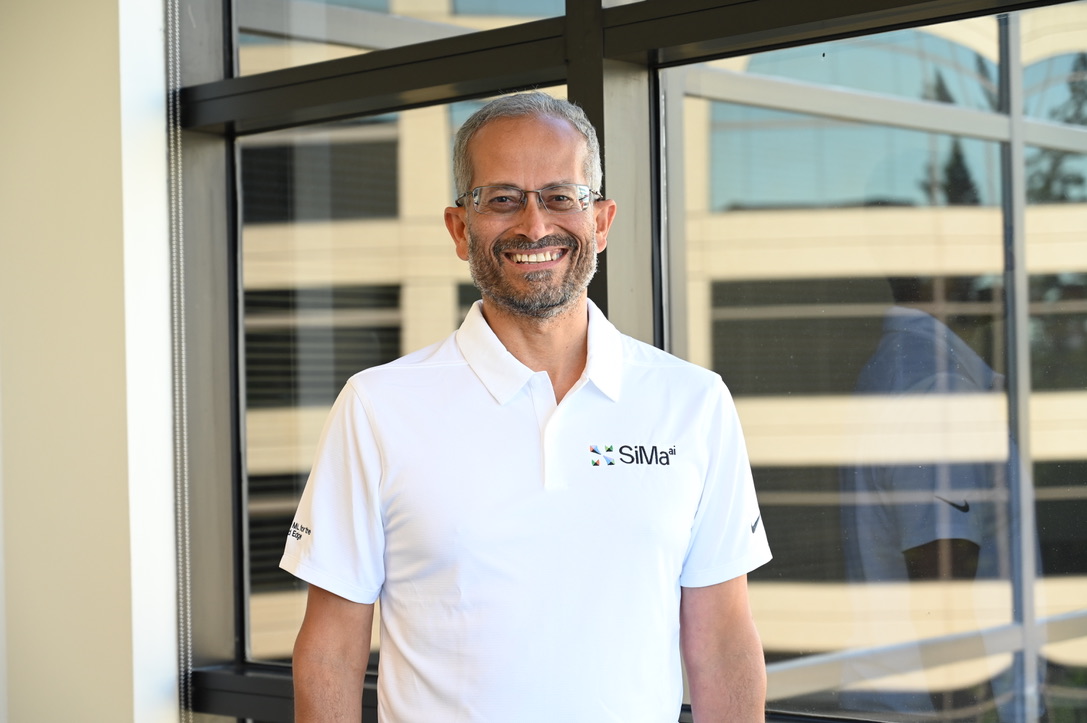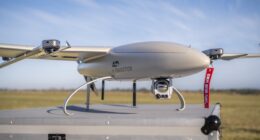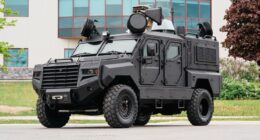When Krishna Rangasayee left a high-ranking executive role at a successful semiconductor company in 2018, he wasn’t chasing hype. In fact, he was running toward a part of the artificial intelligence ecosystem he believed was being largely ignored: the edge.
“The cloud was getting all the attention,” he said. “But the edge — the physical world we live in every day — was dramatically underserved.”
While cloud-based AI dominated headlines and venture capital flows, Rangasayee saw a deeper problem.
AI systems, he argued, were not designed to run where they were increasingly needed: in real-time, decentralized, and often disconnected environments — from autonomous drones to industrial robots, medical devices, and battlefield systems.
“There wasn’t a single company, at the time, building from the ground up to solve that problem,” he said. “And I knew from experience that eventually, we would need AI embedded everywhere, in the machines we touch and interact with every day.”
In this episode of Defense Disruptors, we sit down with the founder and CEO of SiMa.ai to talk about building custom silicon, defending disconnected environments, and why the biggest transformation in defense is still ahead of us.

Are you building game-changing tech for defense? 💪
We’re always looking to feature innovators pushing the boundaries in autonomy, AI, energy, and beyond. If your company belongs in the Defense Disruptors spotlight, get in touch with us here.
System Over Silicon
Rangasayee’s company, now six years old, is not just another player in the crowded field of AI hardware. From the start, it has pursued a philosophy that diverges sharply from much of the industry.
“AI and ML are not standalone products,” he argued. “They are capabilities. Yet most of the industry has been focused on selling accelerators, chips that can perform AI tasks quickly, but don’t solve the system-level problem.”
Instead, his company offers a system-on-chip approach, combining multiple AI and machine learning functions into a single chip that can run an entire application on its own.
“That means one chip does what used to take several,” Rangasayee explained. “It simplifies software development, reduces energy use, and makes security and privacy much easier to manage.”
That means smaller footprints, lower power draw, and a hard focus on usability. The result? Chips that deliver “10x performance per watt” — and a software stack that doesn’t require an AI PhD to operate.

Software First — Even in Silicon
Despite the hardware chops, Rangasayee insists his company is software-first.
“The biggest bottleneck to AI scaling at the edge is software,” he said. “Most companies don’t focus enough on usability. But if we don’t make it easy to use, we won’t scale.”
Nowhere is that more true than in defense. “These organizations don’t have that kind of AI talent. They need an AI experience that doesn’t require expertise to deploy.”
That insight shapes the company’s development priorities. Its tools are built for ease, not just speed. “The defense community wants best-in-class AI, but they can’t afford the complexity.”
And then there’s the question of security. In edge AI deployments — particularly in national security applications — cloud connectivity is not just undesirable, it’s unacceptable.
“There’s no Wi-Fi. No cell signal. The data never leaves the chip.” Rangasayee noted. “So our systems are built from the ground up to ensure data privacy and secure processing. That’s not an afterthought, it’s the design premise.”
Shifting Geopolitical Landscape
Interest in defense-focused startups has surged in the past two years, partly driven by the war in Ukraine and broader geopolitical tensions. But Rangasayee believes the shift began earlier.
“From 2000 to 2015, semiconductors were largely out of favor,” he recalled. “National security wasn’t a major theme in venture capital. But that’s changed. There’s now broad recognition that AI, chips, and secure systems are fundamental to national security.”
He described the current moment as a convergence of revolutions: in software, in silicon, in AI, and in defense strategy.
“This isn’t just about technology — it’s a full-stack transformation,” he said. “Everything that used to be done by classic computing will eventually be replaced by AI-based systems.”
Competing Against Giants
But in a field dominated by tech titans with billion-dollar budgets, how does a startup stay ahead?
“You run faster,” Rangasayee said flatly. “There’s no time to pause or celebrate. You launch a product, and five seconds later, you’re onto the next.”
His team recently launched their second-gen platform, Modalix, which supports emerging use cases like large language models on the edge, a concept almost no one was talking about two years ago.
“Staying ahead isn’t optional,” he said. “You either predict the future, or you become irrelevant.”
The Founder’s Journey
Still, for Rangasayee, the technology is only part of the story.
Leaving behind the comfort of corporate life wasn’t a spur-of-the-moment decision but a necessary one. “This is my first startup,” he said. “I had always been a company guy.”
But after years of watching the edge market get sidelined in favor of cloud computing, he couldn’t ignore the gap. “I saw this massive market — $40 billion a year in edge semiconductors — that was distributed across thousands of customers. It wasn’t sexy. It wasn’t easy. But it was real. And it was underserved.”
There was no single eureka moment. “Just a conviction that this problem mattered, and that no one was solving it.”
The road hasn’t been easy. “Starting a chip company is not for the faint of heart,” he said. “You’ll get punched in the gut. You’ll fall. You’ll fail. And you’ll need to get back up every time.”
But the mission makes it worth it. “As an immigrant, the opportunity to help the country that welcomed me — to play a role in national security — that’s deeply meaningful.”
Words of Advice
For other founders chasing hard problems in hard markets, Rangasayee has one message: resilience is everything.
“And so is belief — not just in your idea, but in your ability to bring people with you,” he said. “Good ideas and good teams get you to the starting line. But great companies are built through relationships. One introduction, one handshake — that can change everything.”
He doesn’t sugarcoat the reality.
“There’s this myth that entrepreneurship is glamorous. It’s not. It’s lonely. It’s painful. You need a high tolerance for suffering. And you need to burn the boats — no Plan B. Because if you give yourself an out, you’ll take it.”
His mother’s advice still echoes in his mind: “Being humble and paranoid never killed anyone.”
“If you stay hungry, stay humble, and stay scared,” he said, “that’s not a bad way to build a company.”








